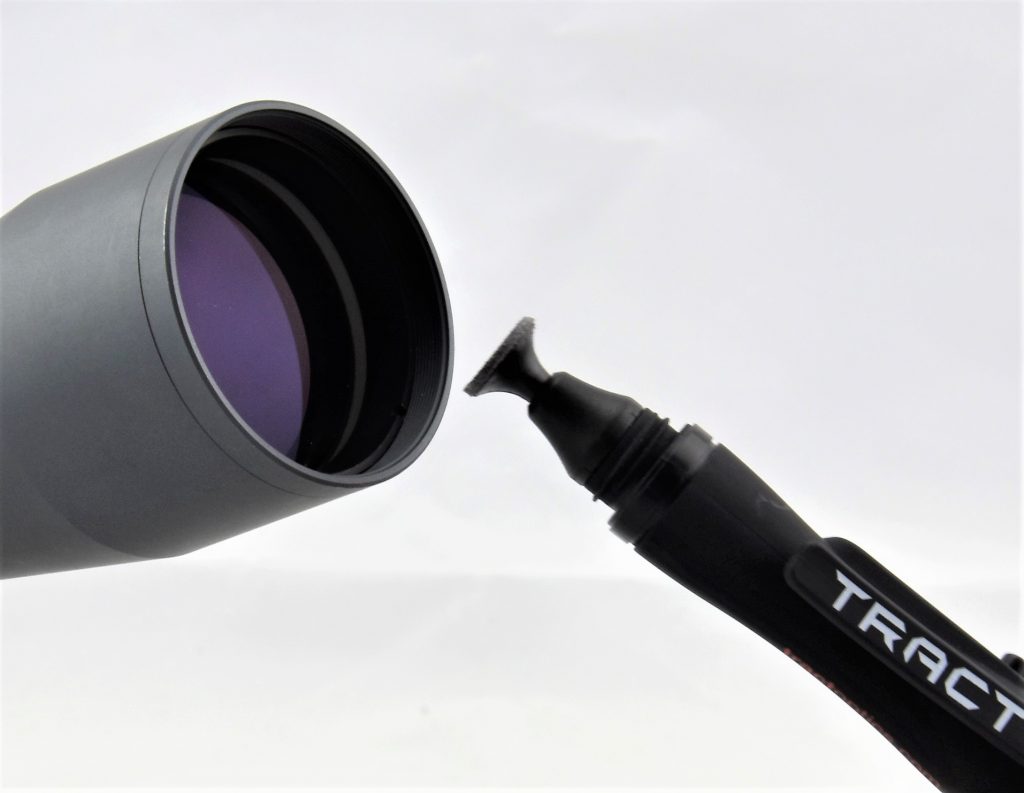Do’s and Don’ts of Cleaning Optics
Do’s and Don’ts of Cleaning Optics.If you’re an avid hunter, shooter or spend a lot of time in the outdoors, your binocular and or scope gets used to the point where cleaning them is an absolute necessity. Keep in mind that every time you use your optics in the field, they will get some sort of dirt, dust, precipitation, oils from your hands or other contaminates on the lenses which affects the image. It’s really no different than the distorted images you see in your mirror or on your car windows when covered with dirt, dust or water stains. A binocular/scope will not produce the desired detail and color when the lenses are dirty or scratched. The smallest scratch, caused by sand or other accumulated contaminates, can fracture light as it enters the optics, distorting or blurring the image.
Lens coatings play a crucial role in the quality of the image you see through your binocular or scope and if damaged with improper cleaning the coatings cannot be re-applied. And while you can’t prevent your optics from ever getting dirty, keeping them clean will go a long way in extending their usefulness.
It doesn’t take much to clean the outside of your scope or binocular and typically, a damp cloth to wipe off the barrels, rims and focus wheels of your binocular or scope, however, the lenses are a different story.
What Not To-Do When Cleaning Optics
#1 - The breathe-and-rub method is at the top of the list. A primary ingredient of dust is silica—in other words, tiny rocks. Silica is harder than glass. If you rub dust across your eyepiece or objective lens, you gouge microscopic scratches into the glass and the ultra-thin coatings on lenses. You can't see the scratches individually, because they're so small, but they scatter light. And so over time your optics begin to produce a cloudy image. Plus, even though we’ve all done it, don't use your breath to clean your lens. Your breath includes minute droplets of water that will spot your lens
#2 - Do not clean them with paper towels, facial/toilet tissue, newspaper. All the paper products mentioned above contain wood fibers which will scratch your coatings. Tissues and paper towels may also contain lanolin which will make a terrible mess on your lenses.
#3 - Do not use Windex, Glass Plus, and other household cleaners that contain ammonia which will absolutely dissolve your coatings and never use detergent on lenses.
The Best Way to Clean Your Optics
Step 1
The first rule of cleaning optics: Get all the dust off before you rub!
It’s critical that you remove all the loose dust from the binocular or scope’s lenses before you try to clean with a micro-fiber cloth or the LensPen chamois tip.
Simply use the brush end of the TRACT LensPen to brush off all dust and dirt that is visible to your eye. It may help to hold the binocular or scope upside down as you brush so the dust falls away instead of just pushing it from one side to the other.

Cleaning Optics
The LensPen chamois tip is impregnated with a non-liquid cleaning compound that absorbs oily residues and contaminants safely and easily
We have also found it very useful especially when your binocular or scope is covered in dirt or dust (trust me it happens) to use a can of compressed air to blow the lenses clean. This is by far the most effective way to remove microscopic dust particles that our eyes just cannot see as well a clear dust in tight spaces. Be sure to only use short bursts of air to avoid damaging your optics.
Step 2
Since TRACT Optics are waterproof, you can actually run them under the water facet (but don't spray too hard) to help float away any remaining dust particles. If this makes you nervous you can always use a cotton swab dipped in water to help float away the remaining particles…please take care not to press the cotton swab into the lens.
Step 3
Now that the dust is gone, you can wipe the lens with lens tissue, a micro fiber lens cloth or the LensPen chamois tip. When using a microfiber, lens cleaning cloth or the LensPen make sure to gently clean the lens in a circular motion to remove smudges. Be gentle and take your time.
Remember…More optics have been ruined by wrong cleaning than by being dropped off a ledge or smashed by your 2 year old!
Additional tips for protecting your optics from dirt and debris include: Using the lens covers that come with the TORIC & TEKOA Binoculars to help protect the lenses when the binoculars aren’t in use; Storing binoculars in a soft, clean case; Taking precautions not to apply sunscreen or insect spray near your binoculars; and using only cleaning tools designed for optics.

Cleaning Optics
